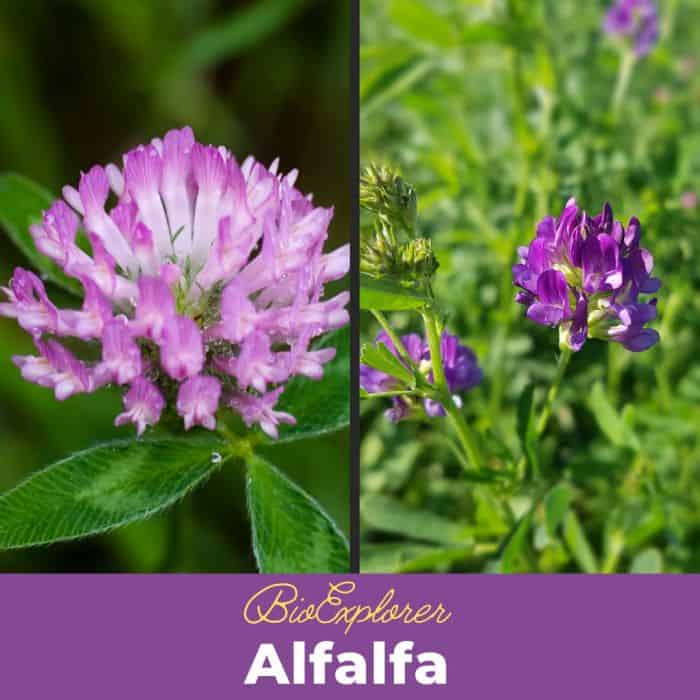
Alfalfa, scientifically known as Medicago sativa, is a perennial flowering plant in the legume family. It has long been revered as one of the most important forage crops globally due to its high nutritional value and versatility. Often referred to as the “Queen of Forages“, alfalfa is prized for its rich content of vitamins, minerals, and proteins, making it a staple in livestock diets.
Originating from the region that includes Iran, Turkey, and the Caucasus, alfalfa has a storied history. The plant was cultivated by ancient civilizations such as the Greeks and Romans, who recognized its value in animal husbandry. Over the centuries, alfalfa spread across the world, becoming a vital component of agricultural systems in North America, Europe, Australia, and beyond.
Table of Contents
Key Takeaways
- Flower Characteristics: Alfalfa flowers are small, purple to blue-violet, and bloom from spring to early autumn, playing a crucial role in attracting pollinators such as bees.
- Unique Plant Traits: The deep taproot system and ability to thrive in various soil types make alfalfa highly drought-resistant and adaptable.
- Versatile Crop: Alfalfa is widely used as livestock feed due to its high nutritional content and digestibility.
- Historical Importance: Cultivated for thousands of years, alfalfa has been a staple in agriculture since ancient times.
- Environmental Benefits: The plant’s deep roots improve soil structure and health, while its nitrogen-fixing ability enriches the soil.
- Global Cultivation: Grown extensively in regions like North America, Europe, and Australia, alfalfa is a key player in global agriculture.
- Sustainable Farming: Alfalfa supports sustainable farming practices by reducing the need for synthetic fertilizers and enhancing crop rotation systems.
In addition to its agricultural significance, alfalfa plays a crucial role in sustainable farming practices. Its deep root system enhances soil health and prevents erosion, while its ability to fix nitrogen benefits subsequent crops in rotation systems. This multifaceted utility underscores alfalfa’s enduring importance in modern agriculture.
In this comprehensive guide, we will delve into the botanical characteristics, cultivation practices, environmental impact, and various uses of alfalfa. Whether you are a farmer, a gardener, or simply curious about this remarkable plant, this guide will provide you with in-depth knowledge and practical insights into Medicago sativa.
What is Alfalfa (Medicago sativa)?
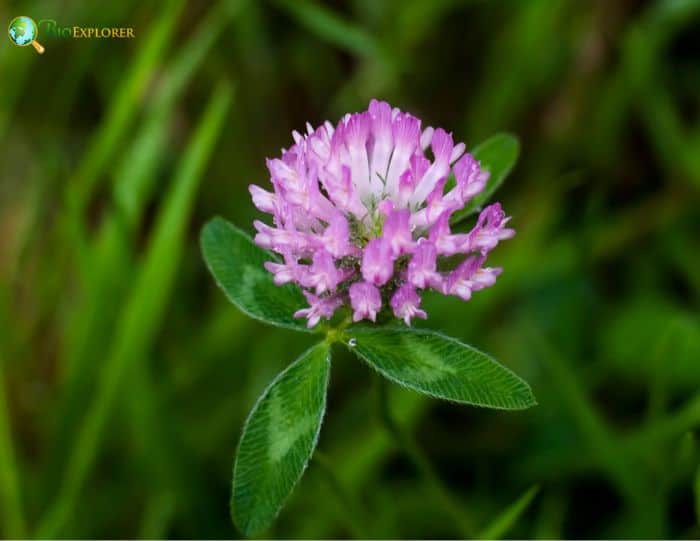
| Plantae | Fabales | Fabaceae | Medicago | Medicago sativa |
- Plant Type: Perennial
- Common Names: Alfalfa (Americas), Lucerne (Europe).
- Flower Dimensions: Approximately 0.2–0.4 inches (5–10 mm) long.
- Flowering Season: Spring to early autumn.
- Flower Colors: Purple to blue-violet.
Alfalfa is a perennial flowering plant that belongs to the Fabaceae family, which is commonly known as the legume or pea family. It typically grows to a height of about 1 meter (3.3 feet) and features an extensive root system that can extend as deep as 4.5 meters (15 feet) into the soil. This deep rooting ability makes alfalfa particularly resilient to drought and contributes significantly to its soil-enriching properties.
The plant has an erect, branching stem with trifoliate leaves — each leaf composed of 3 oblong to ovate leaflets. The flowers of alfalfa are small, typically ranging from 0.2 to 0.4 inches (5 to 10 mm) in length, and they bloom in clusters. The flowers are usually purple to blue-violet, though variations such as yellow and White Flowers can occasionally be found in different subspecies or cultivars.
Common Names and Regional Variations
Alfalfa is known by several names around the world. In North America, “Alfalfa” is the common term, while in Europe, Australia, and New Zealand, it is more commonly referred to as “Lucerne”. These regional names reflect the plant’s widespread cultivation and utilization across different agricultural traditions.
Alfalfa is closely related to other species in the Medicago genus, many of which share similar nitrogen-fixing abilities and forage uses. The plant is well-known for its symbiotic relationship with Rhizobium bacteria, which live in its root nodules and help fix atmospheric nitrogen, enriching the soil.
Alfalfa Name Origin
Alfalfa got its name from Arabic origins. The word “alfalfa” is derived from the Arabic phrase “al-fac-facah” or “al-faṣfaṣa”, which translates to “the father of all foods”. This name was given to the plant in recognition of its high nutritional value and importance as a food source.
Flower Color and Appearance
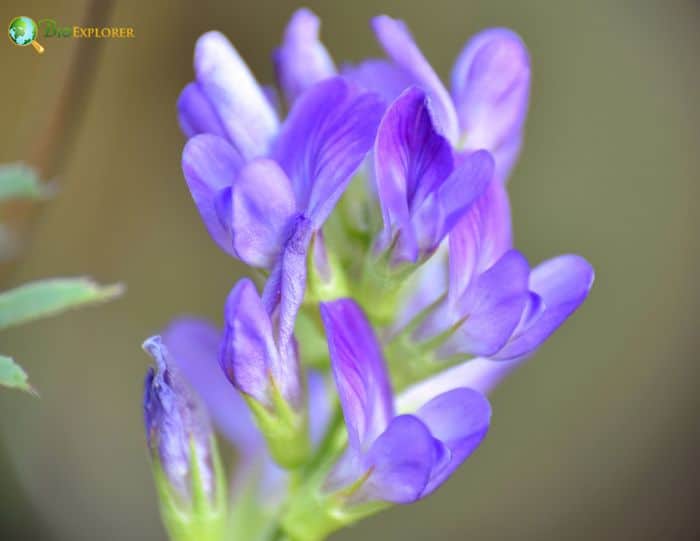
The flowers of alfalfa are visually striking, primarily exhibiting shades of purple to blue-violet. Occasionally, you might find variations that display yellow or white flowers, especially among different subspecies like Medicago sativa subsp. falcata. The vivid colors not only contribute to the plant’s attractiveness but also play a crucial role in attracting pollinators such as bees.
Petal Shape and Structure
Alfalfa flowers have a unique bilaterally symmetrical structure typical of the Fabaceae family. Each flower comprises five petals organized into a standard, wings, and a keel:
- Standard (or Banner): The largest and most prominent petal, often curved or folded.
- Wings: Two lateral petals flanking the keel.
- Keel: Formed by two fused petals, it encloses the reproductive organs of the flower.
This structure is not only aesthetically pleasing but also functionally significant, as it facilitates pollination by guiding insects towards the nectar and pollen.
Growth Habit and Adaptability
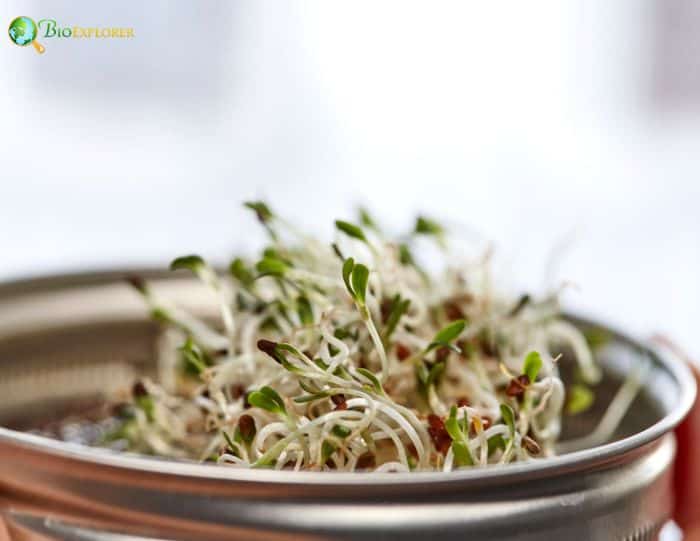
Alfalfa is a versatile plant that can adapt to a wide range of climatic conditions, though it thrives best in well-drained, loamy soils with a pH of 6.5 to 7.5. It is typically grown in temperate regions but can also tolerate colder climates, provided it is not exposed to extreme winter conditions.
Due to its high tolerance for drought and ability to grow in various soil types, alfalfa is cultivated extensively across diverse agricultural landscapes. This adaptability, combined with its high nutritional value, makes alfalfa an invaluable crop in both large-scale farming and smaller agricultural operations.
Variations within the Species
There are several subspecies and varieties of Medicago sativa, each with unique characteristics. For example:
- Medicago sativa subsp. falcata is known for its yellow flowers and greater cold tolerance.
- Medicago sativa subsp. coerulea typically has blue to violet flowers and is more common in Europe.
These variations allow farmers to select the most suitable type of alfalfa for their specific environmental conditions and agricultural needs.
Plant Structures of Alfalfa
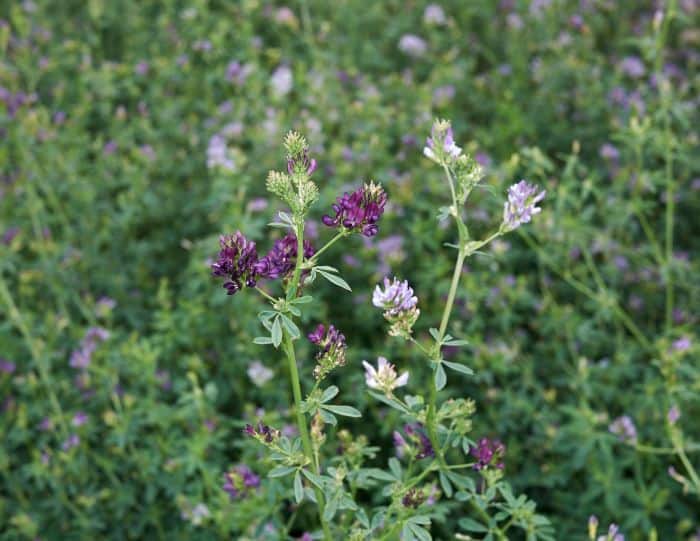
Leaves
Alfalfa has trifoliate leaves, meaning each leaf is composed of three leaflets. These leaflets are oblong to ovate in shape and are typically about 0.5 to 1 inch (1.3 to 2.5 cm) long.
The leaves are an important part of the plant’s photosynthetic apparatus, converting sunlight into energy to support growth and development. The leaflets are slightly toothed along the edges, providing a distinctive look that helps in identifying the plant.
Stems
The stems of alfalfa are erect and branching, and they can grow up to 1 meter (3.3 feet) tall. They are relatively thin but robust, supporting the plant’s foliage and flowers.
The branching nature of the stems allows for a dense canopy of leaves, which maximizes photosynthesis and helps the plant thrive. The stems are also covered with fine hairs, adding to their texture and aiding in moisture retention.
Roots
One of the most remarkable features of alfalfa is its deep taproot system. The primary taproot can extend as deep as 4.5 meters (15 feet) into the soil, allowing the plant to access water and nutrients from deep layers.
This deep rooting ability makes alfalfa highly drought-resistant and helps it survive in arid conditions where other crops might fail. Additionally, the root system includes numerous lateral roots that spread out horizontally, contributing to soil stabilization and preventing erosion.
Root Nodules
Alfalfa forms a symbiotic relationship with nitrogen-fixing bacteria, primarily Rhizobium meliloti, which live in nodules on its roots. These bacteria convert atmospheric nitrogen into a form that the plant can use for growth.
This process, known as nitrogen fixation, significantly enhances soil fertility and reduces the need for synthetic nitrogen fertilizers. The presence of these root nodules is a key characteristic of legumes like alfalfa and underscores their importance in sustainable agriculture.
Seed Pods
After flowering, alfalfa produces seed pods that are coiled and spiral-shaped. These seed pods are about 0.2 to 0.4 inches (5 to 10 mm) long and contain several seeds each. The seeds are small, kidney-shaped, and typically brownish in color.
These seeds are crucial for propagation and can be used for planting new alfalfa crops. The unique shape of the seed pods aids in natural dispersal, allowing the seeds to spread and grow in new locations.
| Leaves | Trifoliate, oblong to ovate leaflets, 0.5-1 inch long, slightly toothed edges |
| Stems | Erect, branching, up to 1 meter tall, covered with fine hairs |
| Roots | Deep taproot system up to 4.5 meters, numerous lateral roots |
| Root Nodules | Contain nitrogen-fixing bacteriaRhizobium meliloti |
| Seed Pods | Coiled, spiral-shaped, 0.2-0.4 inches long, contain several seeds |
![]()
These plant structures not only define the physical appearance of alfalfa but also contribute to its resilience, nutritional value, and agricultural importance.
Genetic Research and Advances
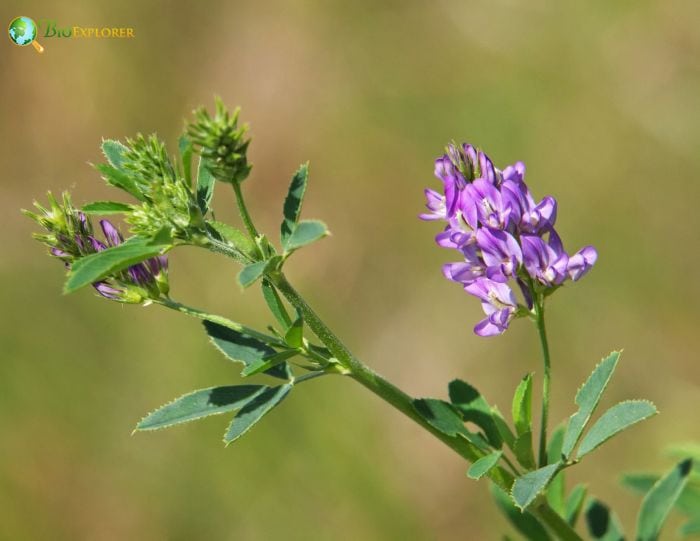
Alfalfa has been the subject of extensive genetic research, aiming to improve its agricultural traits and resilience. Advances in biotechnology have led to the development of genetically modified (GM) alfalfa varieties that offer several benefits:
- Drought Resistance: Researchers have developed alfalfa varieties that can withstand prolonged periods of drought. This is achieved by enhancing the plant’s natural mechanisms to retain water and reduce transpiration. For instance, a study on drought-resistant alfalfa found that genetic modifications improved the plant’s ability to maintain photosynthetic activity and root growth under water-deficit conditions.
- Improved Nitrogen Fixation: Alfalfa’s ability to fix atmospheric nitrogen is one of its most valuable traits. Genetic enhancements have focused on increasing the efficiency of this process, thereby reducing the need for synthetic nitrogen fertilizers. Studies have shown that modified strains of Rhizobium meliloti, the bacteria responsible for nitrogen fixation in alfalfa, can significantly boost nitrogen uptake and soil fertility.
- Disease Resistance: Genetic modifications have also been aimed at increasing alfalfa’s resistance to common diseases such as root rot and leaf spot. By introducing genes that confer resistance to these pathogens, scientists have created alfalfa varieties that are more robust and require fewer chemical treatments.
Genetically Modified Alfalfa: Benefits and Controversies
The development of genetically modified alfalfa has sparked both enthusiasm and controversy within the agricultural community. Here are some key points:
Benefits:
- Higher Yields: GM alfalfa varieties often produce higher yields compared to conventional varieties due to their enhanced resistance to environmental stressors and pests.
- Reduced Chemical Use: By incorporating traits such as herbicide resistance and pest resistance, GM alfalfa reduces the need for chemical herbicides and pesticides, which can be beneficial for the environment.
- Nutritional Quality: Some GM alfalfa varieties have been engineered to contain higher levels of essential nutrients, making them more beneficial as livestock feed.
Controversies:
- Environmental Impact: Critics argue that GM alfalfa could cross-pollinate with wild relatives, potentially leading to the spread of modified genes in the environment. This could have unforeseen ecological consequences.
- Market Acceptance: There is significant consumer resistance to GM crops in many parts of the world, which can impact market acceptance and export opportunities. For example, countries like Japan have strict regulations on GM imports, which can affect farmers who rely on international markets.
- Economic Concerns: The cost of GM seeds can be higher than conventional seeds, which might not be affordable for all farmers. Additionally, the reliance on patented seeds can create dependency on a few large biotech companies.
Impact of Research on Future Cultivation Practices
The ongoing research and development in alfalfa genetics are set to transform future cultivation practices. Here are some potential impacts:
- Precision Farming: Genetic advancements will likely be integrated with precision farming techniques. This involves using data and technology to optimize field-level management regarding crop farming. For instance, drought-resistant alfalfa can be paired with precise irrigation systems to maximize water use efficiency.
- Sustainable Agriculture: Improved nitrogen fixation and disease resistance align well with the goals of sustainable agriculture. By reducing the need for chemical inputs, genetically enhanced alfalfa supports eco-friendly farming practices that protect soil health and biodiversity.
- Climate Resilience: As climate change continues to affect global weather patterns, crops that can withstand extreme conditions will be vital. Genetically enhanced alfalfa that can thrive in drought, heat, and poor soil conditions will be crucial for ensuring food security in the face of climate variability.
Case Study: Genetic Mapping and Freezing Tolerance
A notable study titled “Genome-Wide Investigation of MicroRNAs and Their Targets in Response to Freezing Stress in Medicago sativa” explored the genetic basis of alfalfa’s response to freezing temperatures. The research identified specific microRNAs and their target genes that are involved in enhancing freezing tolerance. These findings pave the way for breeding alfalfa varieties that can survive harsh winter conditions, expanding the regions where alfalfa can be cultivated successfully.
Key Findings:
- Identification of MicroRNAs: 173 known and 24 novel microRNAs were expressed in response to cold and freezing stress.
- Target Genes: 105 target genes associated with biological regulation, cellular processes, metabolic processes, and stress response were identified.
- Breeding Applications: The identified microRNAs and genes can be targeted in breeding programs to develop freezing-tolerant alfalfa varieties.
Fun Facts about Alfalfa
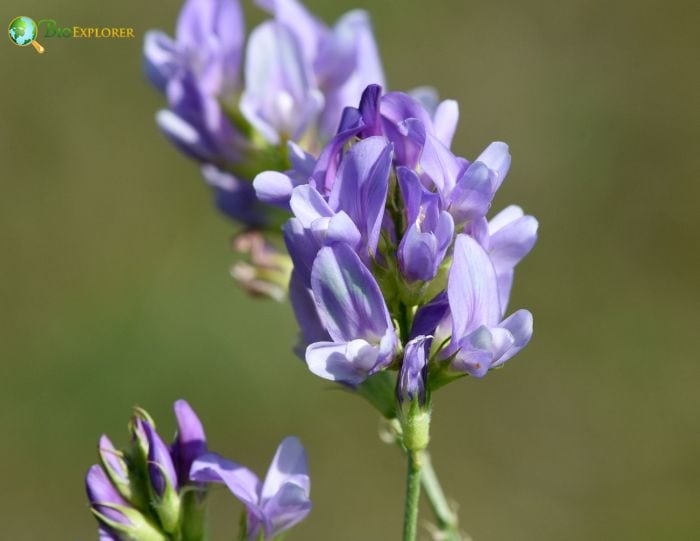
Historical Significance
- Ancient Cultivation: Alfalfa has been cultivated for thousands of years. Ancient civilizations, including the Greeks and Romans, recognized its value in feeding their livestock. It was known as the “King of Forage” due to its high nutritional content and versatility.
Nutritional Powerhouse
- Rich in Nutrients: Alfalfa is packed with vitamins and minerals, including vitamin A, vitamin C, vitamin E, and vitamin K. It’s also a good source of calcium, potassium, and iron, making it a highly nutritious addition to both animal and human diets.
- Alfalfa Sprouts: Alfalfa sprouts are a popular addition to salads and sandwiches. They are low in calories but high in essential nutrients, making them a healthy choice for those looking to boost their nutrient intake.
- Herbal Medicine: Traditionally, alfalfa has been used in herbal medicine to treat various conditions. It is believed to help lower cholesterol, manage diabetes, and support overall digestive health.
Environmental Benefits
- Soil Improvement: Due to its deep root system, alfalfa helps to break up compacted soil and improve soil structure. This makes it an excellent crop for enhancing soil health and preventing erosion.
- Nitrogen Fixation: Alfalfa plants can fix atmospheric nitrogen, enriching the soil and reducing the need for synthetic fertilizers. This makes it a key player in sustainable farming practices.
- Biodiversity: Alfalfa fields support a diverse array of wildlife, including beneficial insects, birds, and small mammals, contributing to the overall health of agricultural ecosystems.
Unique Plant Traits
- Deep Taproot: Alfalfa’s taproot can grow up to 15 feet deep, allowing it to access water and nutrients from deep within the soil. This makes it highly drought-resistant and capable of thriving in challenging conditions.
- Versatile Uses: Beyond its role as a forage crop, alfalfa is used in various industrial applications, including biofuel production and paper manufacturing.
- Fast Regrowth: After cutting, alfalfa can regrow quickly, allowing multiple harvests per year, which is beneficial for continuous forage supply.
Agricultural Facts
- High Yield Crop: Alfalfa is known for its high yield. Under optimal conditions, it can produce multiple harvests per year, providing a continuous supply of forage for livestock.
- Bee-Friendly: Alfalfa flowers are highly attractive to bees, making alfalfa fields an important habitat for pollinators. This mutual relationship benefits both the crop and the broader ecosystem.
- Sustainable Agriculture: Alfalfa’s role in crop rotation helps improve soil health and reduce the need for chemical inputs, promoting sustainable farming practices.
Genetic Advances
- GM Varieties: Genetic research has led to the development of genetically modified (GM) alfalfa that is more resistant to drought and pests. These advancements have increased yield and reduced the need for chemical treatments.
- Freezing Tolerance: Studies on alfalfa’s genetic response to freezing stress have identified specific genes that can help breed more cold-tolerant varieties, expanding the regions where alfalfa can be grown successfully.
Case Studies and Research Highlights
- Drought Resistance: A study on drought-resistant alfalfa found that genetic modifications improved the plant’s ability to maintain photosynthetic activity and root growth under water-deficit conditions.
- Soil Health Improvement: Research has shown that fields rotated with alfalfa experienced a 20% increase in soil organic matter and a 30% reduction in nitrogen fertilizer requirements.
Economic Importance of Alfalfa
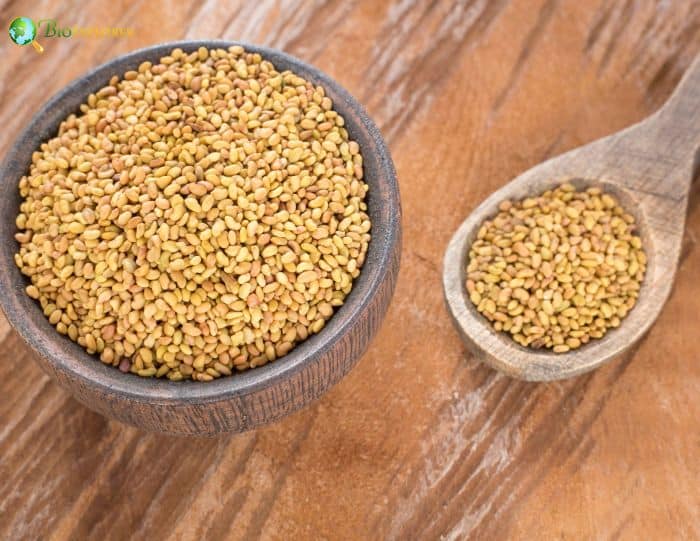
Global and Regional Market Overview
Alfalfa is a highly valuable crop in the global agricultural market. It is extensively cultivated in regions with suitable climates, including North America, Europe, Australia, and parts of Asia. The United States is one of the largest producers of alfalfa, with significant cultivation in states like California, Arizona, and Idaho. Alfalfa’s economic significance is due to its high nutritional value and versatility in various applications, primarily as livestock feed.
Economic Benefits for Farmers
- High Yield and Quality: Alfalfa’s ability to produce high yields of nutrient-rich forage makes it an economically attractive crop for farmers. Under optimal conditions, multiple harvests per year can be achieved, providing a consistent and profitable supply of forage.
- Reduced Input Costs: The nitrogen-fixing ability of alfalfa reduces the need for synthetic nitrogen fertilizers, lowering input costs for farmers. Additionally, its role in crop rotations can enhance soil fertility and reduce pest and disease pressures, leading to further cost savings.
- Market Demand: There is a steady demand for alfalfa as livestock feed, particularly in the dairy and beef industries. This demand ensures a reliable market for farmers who grow alfalfa, contributing to stable income.
Trade and Export Significance
Alfalfa is a significant export commodity for many countries. The global trade of alfalfa hay and products supports the agricultural economies of exporting nations. Key importers of alfalfa include countries with large livestock industries but limited domestic forage production, such as China, Japan, and the Middle East.
- United States Exports: The U. S. is a major exporter of alfalfa products. In 2023, the U. S. exported 3 million metric tons of hay (including alfalfa and other types), valued at $1.32 billion. This underscores the importance of alfalfa in international trade.
- Major Importers: Japan consistently ranks as a top importer of alfalfa products. China and Middle Eastern countries, particularly Saudi Arabia and the United Arab Emirates, are also significant importers.
- Economic Impact: The export of alfalfa contributes substantially to the agricultural revenue of exporting countries. It also supports related industries such as transportation and processing.
Case Study: Alfalfa’s Role in the Dairy Industry
Research on alfalfa’s role in the dairy industry has demonstrated that including alfalfa in dairy cow diets can significantly improve milk production and quality. The high protein content and digestibility of alfalfa hay and silage provide essential nutrients that contribute to improved dairy performance.
Key Findings:
- Nutritional Value: Alfalfa is an excellent source of energy, protein, fiber, and minerals for dairy cattle. Its protein is highly digestible and contains a higher proportion of ruminally undegradable (bypass) protein compared to grass hays.
- Improved Digestion: The high-quality fiber in alfalfa is rapidly digested in the rumen, stimulating feed intake. It also provides more buffering capacity in the rumen, which can help decrease the incidence of health problems such as ruminal acidosis.
- Increased Milk Production: Studies have shown that replacing grass silage with alfalfa can lead to an increase of 1.7 kg in milk yield per cow. This improvement is attributed to alfalfa’s unique nutritional profile and its ability to increase dry matter intake.
- Economic Benefits: Dairy farms using alfalfa may experience lower feed bills due to reduced need for protein supplements in dairy rations[3]. At current prices, 1 tonne of alfalfa could potentially return an additional 340 kg of milk worth €106 over the price of the silage it replaces.
- Versatility: Alfalfa can be used in various forms in dairy rations, including as hay, silage, or in cubes and pellets, providing flexibility in feeding strategies.
- Enhanced Feed Intake: Research has shown that replacing grass silage with alfalfa can increase diet dry matter intake by 2.3 kg per cow.
Alfalfa plays a valuable role in dairy nutrition, contributing to both the health of the cows and the economic viability of dairy operations. Its benefits extend beyond simple nutrient analysis, making it a key component in optimizing dairy production and efficiency.
Alfalfa plays a crucial role in global agriculture, providing significant economic benefits to farmers and contributing to the stability of the livestock industry. Its high yield, nutritional value, and versatility make it an indispensable crop, while its environmental benefits support sustainable farming practices. The global demand for alfalfa ensures its continued importance in agricultural markets, driving economic growth and development.











